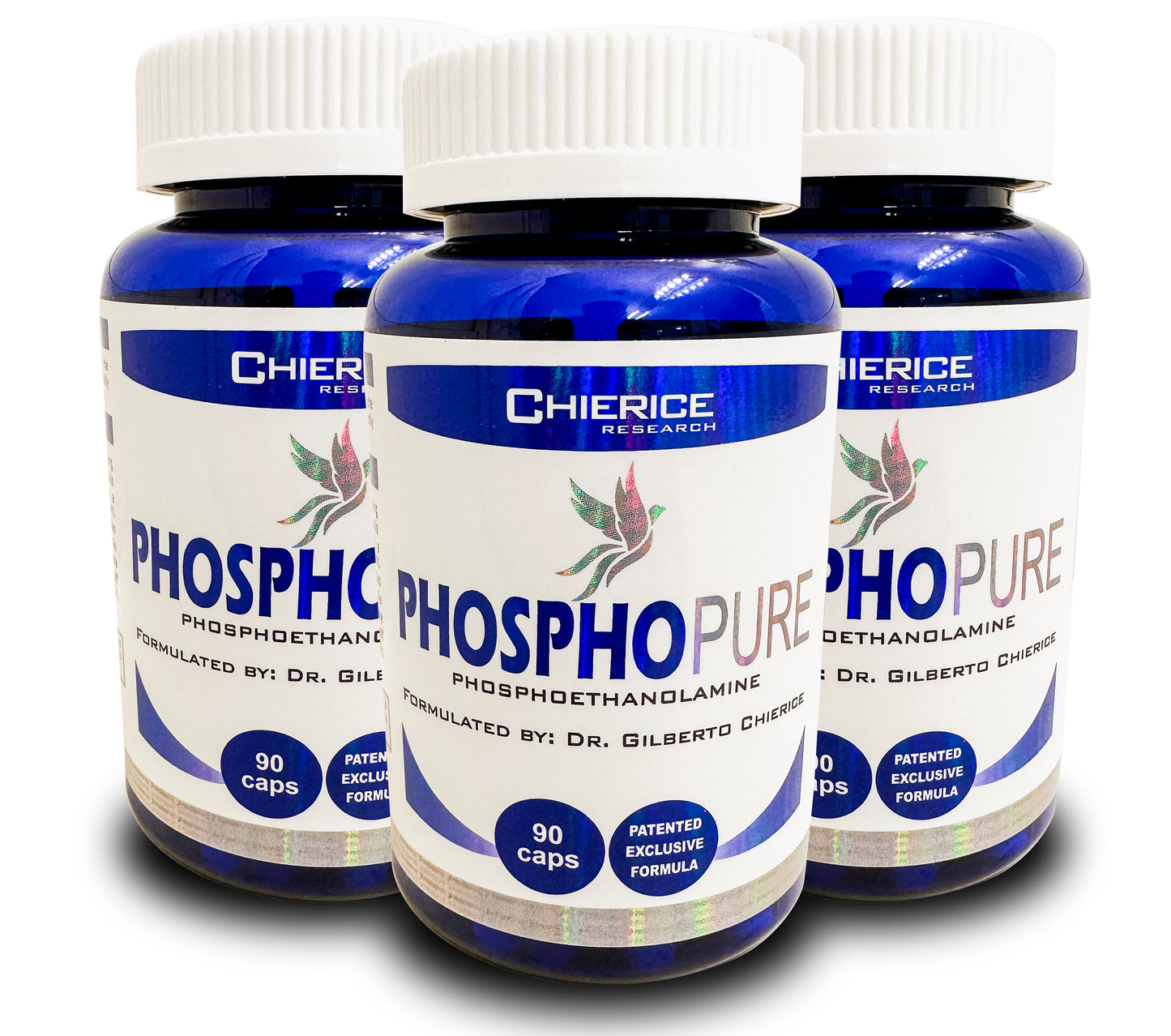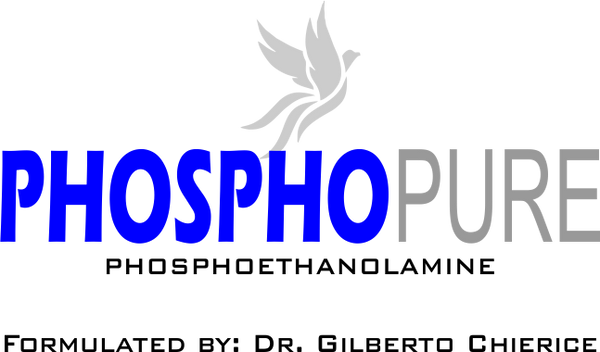1
/
of
2
Phosphopure
Phosphopure Bundle – 90 Capsules
Phosphopure Bundle – 90 Capsules
Regular price
$177.00 USD
Regular price
Sale price
$177.00 USD
Unit price
/
per
Couldn't load pickup availability
Professor Gilberto Chierice, PhD in Chemistry (curriculum vitae, attached), in some of his chemical experiments at the University of São Paulo (USP), São Carlos campus, in 1989, came across a chemical product that had Phosphoethanolamine as a byproduct. At the time, his students were afraid to work with this byproduct in their experiments, because there was a myth that it could be carcinogenic. Decades earlier, in 1935, in Toronto, Canada (Outhouse, attached), at a research center, they opened the head of a cow that had died of a large brain tumor and there was a significant concentration of Phosphoethanolamine around the tumor. At first, everyone believed that Phosphoethanolamine was the cause of the tumor... The Professor was intrigued by the situation, because he saw that Phosphoethanolamine participated in the human body in several stages of the metabolic map processes, in addition to being present even in breast milk. The Professor conducted several studies and comparisons and understood that, in the case of Outhouse, Phosphoethanolamine was not the cause of the tumor, but rather the bovine shield. From then on, he began to try to synthesize Phosphoethanolamine and, after thousands of tests, he managed to synthesize it in a unique way in the world: Bioidentical (almost endogenous).
O Professor Gilberto Chierice, Doutor em Química (curriculum vitae, anexo), em alguns de seus experimentos químicos na Universidade de São Paulo (USP), campus de São Carlos, no ano de 1989, se deparou com um produto químico que tinha como subproduto a Fosfoetanolamina. Seus estudantes, na época, ficaram com receio de trabalhar com esse subproduto em seusexperimentos, pois havia um mito de que este poderia ser cancerígeno. Pois décadas atrás, no ano de 1935, em Toronto, no Canadá ( Outhouse, anexo ), em um centro de pesquisa, abriram a cabeça de um bovino que tinha morrido com grande tumor cerebral e havia ao redor do tumor uma significativa concentração de Fosfoetanolamina . A princípio todos acreditavam que a Fosfoetanolamina era a causadora do tumor... O Professor, ficou intrigado com a situação, pois viu que a Fosfoetanolamina participava no corpo humano em várias etapas dos processos do mapa metabólico, além de estar presente até no leite materno. O Professor fez vários estudos e comparações e entendeu que, no caso do Outhouse, a Fosfoetanolamina não era a causadora do tumor e sim era o escudo do bovino. A partir daí ele começou a tentar sintetizar a Fosfoetanolamina e após milhares de testes, conseguiu sintetiza-lá de uma maneira única no mundo: Bioidêntica (quase endógena).
Share




